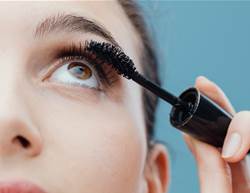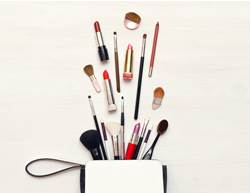There’s a lot we get wrong about ageing—but it’s true that lots of women are still wondering how to look younger and feel as youthful on the outside as they do inside. And while ageing gracefully can mean something different to everyone (whether it be embracing grey hair or stopping by your dermatologist for a cosmetic procedure), it’s entirely up to you to determine what makes you feel good.
The least you can do for your journey is find practices that support you through it; that keep you healthy, confident, and grounded. And guess what? Those habits don’t all have to be about the way you look. Most of us can probably agree that, as you get older, looking good comes with feeling good, and feeling good comes in many forms.
To help you strike this ever-changing balance and, most importantly, enjoy life as it comes, we reached out to dermatologists, dietitians, doctors, and more for some pro self-care tips to make the ageing process easier—from what to eat to to how to change your makeup routine and more.
1. Wear SPF
“My number one tip for ageing gracefully is SPF,” says Aaron Barry, celebrity makeup and hair artist. “No matter your age, gender, race or skin type, sun damage accelerates the ageing process.” More importantly, it increases risk of skin cancer.
“You can now even prep your skin for makeup with SPF primers,” Barry adds. “I like to use the Thrive Causemetics Sunproof 3-in-1 Priming Sunscreen with SPF 37 at the beginning of my makeup application. Not only does it create the perfect base for foundations but it’s hydrating, controls oil, and most importantly, protects the skin from harmful UV rays.”
2. Lift and lighten eye makeup
“People often follow the natural eye contour when applying eye shadow which can create a droop,” explains Barry. “To lift the eye, I use the outer corner of the brow as my guide, and blend eyeshadow up and out towards the outer corner of the brow. This creates a lifted and a lengthened eye shape.”
On top of that, Barry recommends staying away from heavy eyeliner. He says it can “look harsh and draws attention to drooping lower lids.” Instead, he suggests tight lining the upper lid by applying liner to the upper inner lash line. It’s not stark, but “still frames and defines the eye,” he says.
3. Use volumising, moisturising hair products
“It is super important to remember that the hair that we had in our 20s is not the hair that we have as we transition into our 50s and beyond,” explains hair stylist Jessica Wall Innella. She adds that you may experience changes such as thinning and dryness, both of which can be remedied by the right products.
For a good moisturising, low-maintenance treatment, Innella recommends Aloxxi’s Essential 7 Oil Leave-In Conditioning Cream.
“For a super light-weight thickening spray formulated to be sprayed liberally throughout the hair, I love Neuma Blow Out Mist,” says hair health expert and trichologist Shab Reslan.

4. Embrace your greys
Or as Innella calls them, “hairs of wisdom.” Innella encourages embracing grey hair and says your stylist can help. “Having a plan with your stylist about what the transition looks like is key,” she says, adding that it often includes lightening around the hairline for a better blend. “Incorporating highlights or dimension will defuse the part line and span out the time between touchups,” she says.
You might notice that your grey strands are a bit coarser and more wiry than usual, which is why Innella recommends a moisturising hair mask to condition and keeps colour fresh.
5. Exercise daily
Aim to move for at least 30 minutes daily. You can even disperse it over small increments throughout the day to make it feel more approachable, says gynaecologist Dr JoAnn Pinkerton.
You can try walking, some gentle yoga, or if you’re feeling particularly strong, some resistance training or Pilates.

6. Don’t over-powder
“A big mistake I often see is the overuse of powder, which can appear cake-y and drying on the skin,” explains Barry. That’s the opposite of the look you want to achieve, which is why he recommends opting for a very light dusting of a radiant, hydrating product like By Terry’s Hyaluronic Hydra-Powder as a finishing makeup step. “This helps maintain moisture in the skin, it blurs imperfections, minimises pores, fills in fine lines, and controls shine without drying you out,” he adds.
7. Precisely apply contour
“Contour and blush placement is key in achieving lift,” says Barry. To ensure you’re applying it in the right place, Barry recommends finding your cheekbone and applying a cream contour or bronzer beneath it to create shadow and depth, repeating the technique along the jawline. To blend it out, he swears by the Artís Oval 6 brush. “It really hugs the shape of the cheekbone giving you great definition,” he adds.

8. Stay hydrated
“One extremely important nutrient that often gets overlooked is water,” explains dietitian Heather Mangieri. “Even slight dehydration can negatively impact mood, energy levels, and the ability to focus.” She adds that dehydration can also result in dry skin that appears more wrinkled.
To make sure you get the amount of water you need, Mangieri says to start drinking first thing in the morning and continue throughout the entire day. “Filling a large water bottle in the morning and taking it with you wherever you go can help you remember to drink,” she adds.
9. Get ample sleep
It’s easy to slack off on the zzzs when you’re young and can easily recover. But as you age, sleep becomes crucial to living life fully. Dr Pinkerton recommends you “make it a priority” to get at least seven to eight hours of rest every night to remain alert and sharp.
10. Use a retinol-based night cream
Retinol is a form of vitamin A that increases cell turnover, therefore improving skin texture and bounce. Dermatologist Dr Anar Mikailov says using a night cream that contains retinol or one of its alternatives, tretinoin, retinol, bakuchiol, or retinyl, is “a great way to maintain your skin elasticity and strength.” He recommends the Skintensive Bakuchiol & Retinol Dual Renewal PM Cream.

11. Eat more nutrient-rich meals
“There is a natural slowdown in metabolism as we get older and the intensity of activity starts to slow down, too. Those changes mean that fewer calories are needed to maintain a healthy body weight,” explains Mangieri. “Choosing nutrient-dense foods becomes necessary to meet daily nutrient requirements without over-consuming calories.”
There are many ways you can incorporate nutritionally diverse meals into your diet—one of them being through a quick, easy smoothie.
A smoothie with your choice of milk, banana, peanut butter, protein powder, chia seeds, and spinach will provide vitamin D, calcium, magnesium, and many other vitamins and minerals to support optimal health, adds Asche.
Try this blueberry smoothie or our full collection of healthy recipes.
12. Add collagen to your routine
“Collagen is the most abundant protein in the body,” says dermatologist Dr Rina Allawh. “Essentially, these are long, large molecules with chains of amino acids. Together, collagen is responsible for keeping skin strong and firm and plays an important role in wound healing.”
However, as we get older our bodies begin to produce less and less collagen each year—and eventually things like fine lines and wrinkles begin to creep in.
So as our bodies begin to produce less collagen, the option to supplement with the best collagen powders on the market becomes a viable option. And while more research is needed to determine the effectiveness of taking collagen, most experts agree there is little harm in trying.

13. Exfoliate skin regularly
Exfoliating your skin at home with products containing alpha hydroxy acids (AHAs) like glycolic acid or beta hydroxy acids (BHAs) like salicylic acid is “a really nice low-level way of maintaining skin clarity and glow,” explains cosmetic dermatologist Dr Karan Lal, who recommends looking for over-the-counter acid-containing peel pads to use a few times per week.
Another option that would be even more effective according to Dr Lal is chemical peels that can be performed by your dermatologist or an experienced beauty therapist. Dr Lal recommends the Jessner peel, as it is a “gentle peel that’s safe on all skin types” as a great place to start.
The important thing to note when considering a chemical peel is that there is usually a bit of downtime associated with the treatment. You can expect the downtime for peels to be anywhere from three to five days, which is usually delayed by about 48 hours.
14. Limit sugar intake
“Soda, juices, sports drinks, and other foods containing sugar or corn syrup cause inflammation, along with destruction of collagen and elastin,” says dietitian Andrea Bailey. “This can lead to wrinkles and premature ageing. Sugar can also increase blood glucose, which causes a surge in insulin and androgen hormones and increases risk for oily skin and acne.”
While we would never recommend making any foods “off-limits” for the sake of a younger appearance, there is something to be said for your overall health when cutting down on sugar consumption.

15. Don’t forget about your hands and neck
Most people focus on their faces when it comes to the visible signs of ageing, which makes sense – the face is front and centre. But, your hands and neck often show these visible signs of ageing just as quickly (or quicker) than your face. Dr Lal notes that these areas often look more aged due to pigmentation like age spots or brown spots.
To combat these, Dr Lal suggests using a retinol or retinoid on the backs of your hands, neck, and decolletage which will “help stimulate collagen, improve skin quality, and fade some of those brown spots that make you look more aged.”
Also be sure to moisturise these areas as thoroughly as your face. “Moisturising helps keep your skin hydrated and when your skin is hydrated it looks visibly plumper,” Dr Lal explains. “So using things like hyaluronic acid and ceramides is going to help retain that moisture and give your neck and your hands a more youthful appearance.”
16. Consider treatments
While in-office treatments and cosmetic procedures (invasive or non-invasive) are completely optional in terms of ageing well and looking younger, some people find them worthwhile. Dr Lal suggests looking into a few different options and considering your skin type and tone which will dictate the treatments that would work best for you. Aside from chemical peels, Dr Lal suggests looking into treatments like microneedling and lasers, which can both be helpful at reducing the visible signs of ageing and are minimally invasive.
Laser treatments like IPL (intense-pulsed light) and BBL (broad band light) can be useful for those with lighter skin tones or people who have lots of sun damage. These treatments have minimal down time (likely just a day or two) and helps reduce the appearance of “leathery skin” or “crepey skin” as well as hyperpigmentation.
Another one of Dr Lal’s suggestions is microneedling, which is a great treatment option for inducing collagen production and targeting concerns like fine lines, superficial acne scars, or “crepey” skin.
17. Understand cosmetic procedure risks
Scheduling an appointment for Botox or filler injections may seem like a quick fix, but the reality is that they’re high-maintenance and come with a slew of risks that not everyone talks about. According to Dr Mikailov, Botox – which prevents wrinkles by essentially inhibiting muscle contraction – usually requires two to four annual injections for the ideal benefit.
Filler, which is often use to plump lips or lift certain areas of the face, can be made of various substances, says Dr Mikailov, and if done wrong, can have serious adverse effects including stroke, blindness, severe scarring, and permanent “filler bumps” that happen when filler migrates.
“Ageing gracefully does not require ‘going under the knife’ or plastic surgery,” says Dr Mikailov. “Establish a relationship with a dermatologist who can guide you to your goals.”
Disclaimer: Dietary supplements are products intended to supplement the diet. They are not medicines and are not intended to treat, diagnose, mitigate, prevent, or cure diseases. Be cautious about taking dietary supplements if you are pregnant or nursing and be sure to consult your doctor before taking new supplements (or providing them to a family member) in any situation, as they can interfere with medication.



.jpg&h=90&w=90&c=1&s=1)






